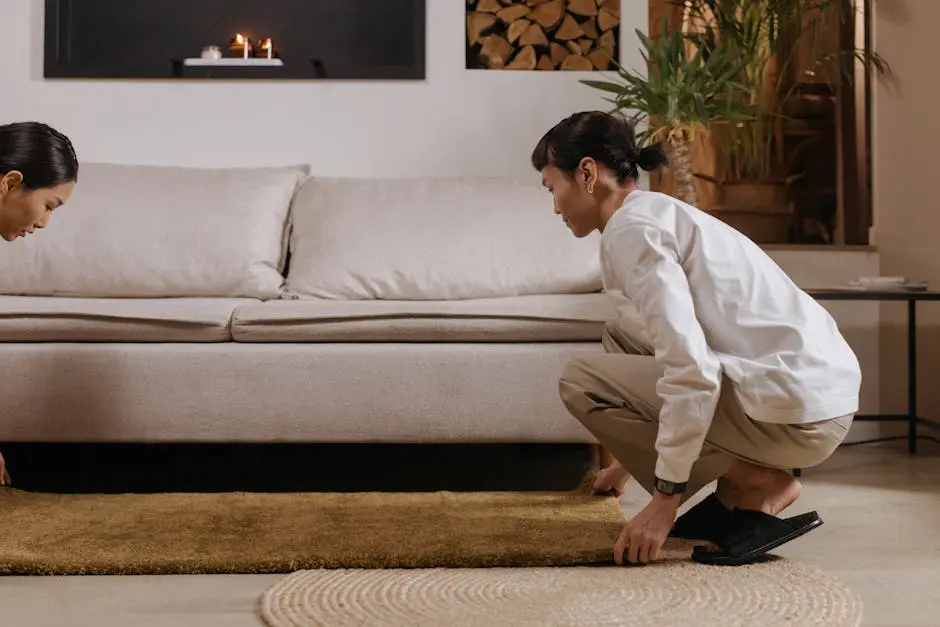Incorporating contemporary rugs into spaces dominated by traditional furniture can create a stunning contrast and enhance the overall aesthetics. This blend of styles breathes new life into your interior design, offering a refreshing twist that maintains a harmonious balance. In this FAQ article, we’ll explore how contemporary rugs can complement traditional furniture and provide tips on selecting the perfect match.
Why Mix Contemporary Rugs with Traditional Furniture?
Mixing contemporary rugs with traditional furniture allows for a unique contrast that can elevate the design of a room. The juxtaposition of styles adds depth and interest, making spaces feel both dynamic and cohesive.
Contemporary rugs bring an unexpected energy and modern flair to traditional settings, enhancing the classic beauty of antique pieces. According to The Beauty of Contrast: Modern Rugs in Traditional Spaces, incorporating a modern rug can infuse a time-honored look with vibrancy without clashing, creating an invigorating aesthetic.
When you blend traditional furniture with contemporary rugs, you’re crafting an environment that’s both stylish and timeless. This combination allows for the celebration of rich, historical elements while introducing an aspect of innovation and modern design.
Integrating rugs with contrasting styles can make a room feel more curated and personalized, opting for rugs that harmonize with the furniture’s color palette or pattern can achieve a beautifully unified look.
Ultimately, the key is balance. By allowing contemporary rugs to complement rather than overshadow traditional furniture, you create inviting spaces that reflect conscious design decisions and an appreciation for both the past and the present.
Choosing the Right Contemporary Rug
When selecting a contemporary rug to pair with traditional furniture, consider its color, pattern, and material. A well-chosen rug can add a modern twist while respecting the established style of the furniture.
Understanding the different styles of contemporary rugs is essential. As detailed in Modern Area Rug Styles, rugs come in various forms such as abstract, geometric, or even those with bold colors and minimalist designs, providing endless possibilities for complementing traditional aesthetics.
Choosing a rug with a muted tone can often blend seamlessly with traditional pieces, enriching the space without overwhelming it. Consider transitional tones for a cohesive but distinct look.
Balancing Colors and Patterns
Achieving a harmonious look involves blending the colors of the rug with your furniture. Opt for a contemporary rug that either complements or elegantly contrasts with the hues of your traditional pieces.
Patterns in rugs can play a pivotal role in tying the room together. Consider the use of subtle patterns that echo elements from your existing decor to avoid any jarring aesthetic interruptions. This concept can be particularly successful when employing unifying patterns to bring various room elements together.
Color consistency with a twist can be the secret ingredient to make a decor successful. For example, if your furniture is mostly neutral-toned, a bright, vividly-colored rug can create a vibrant focal point that still adheres to the room’s overall theme.
Enhancing Texture and Warmth
Contemporary rugs can introduce new textures into a traditionally styled room. This layering of textures adds warmth and depth, creating a more inviting and aesthetically pleasing space.
Choosing rugs made from varying materials such as wool, silk, or jute can introduce different tactile experiences and visual interest. As highlighted in What Makes a Rug Contemporary?, these textures can act as the bridge between diverse styles and periods in any room.
Combining various textures through your choice of rugs demands careful consideration of their position and their impact on the room’s ambiance. For example, a plush contemporary rug can soften wooden or metallic elements within traditional furniture settings.
Consider the Room’s Function
When integrating contemporary rugs, consider the function of the room. Ensure the rug enhances the purpose of the space without overwhelming the traditional elements.
Functional considerations include room size, natural light, and foot traffic, as these factors influence your rug’s durability and aesthetic fit. Selecting a contemporary rug tailored for these functional needs can prolong the life of the furniture and rug ensemble.
In high traffic areas such as living rooms or hallways, a low-pile, sturdy rug is advisable to withstand wear while retaining its aesthetic appeal. Opt for resilient materials that complement both contemporary designs and traditional staples.
Strategic Rug Placement
Think about where you place your contemporary rug in relation to the traditional furniture. Strategic placement can highlight the best features of both the rug and the furniture.
Placing a rug partially under furniture such as sofas or tables can create a cohesive grouping that integrates traditional and contemporary elements into one unified space. This tactic draws attention to focal pieces and enhances the sense of balance.
Don’t hesitate to experiment with asymmetrical placements, as these can add unexpected dynamism to a room. Directing attention to specific corners or features of a room can give the space an artistic flair only achievable through such combinations.
Bringing Styles Together: A Harmonious Blend
In conclusion, contemporary rugs can indeed complement traditional furniture by providing an exciting contrast, enhancing your room’s texture, blending colors thoughtfully, and strategically placing the rugs. By following these tips, you can create a cohesive and stylish space that reflects both traditional elegance and contemporary flair.

